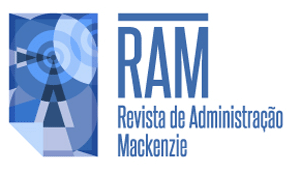Alunurm et al. (2020)Alunurm, R., Rõigas, K., & Varblane, U. (2020). The relative significance of higher education-industry cooperation barriers for different firms. Industry & Higher Education, 34(6), 377-390. https://doi.org/10.1177/0950422220909737
https://doi.org/10.1177/0950422220909737...
|
Cooperation between higher education institutions and industry |
A linear process with phases of motivation, choice of form of cooperation, engagement, results, and impacts on an environment with barriers and facilitators. |
Sequential |
Ankrah and AL-Tabbaa (2015)Ankrah, S., & AL-Tabbaa, O. (2015). Universities-industry collaboration: A systematic review. Scandinavian Journal of Management, 31(3), 387-408. https://doi.org/10.1016/j.scaman.2015.02.003
https://doi.org/10.1016/j.scaman.2015.02...
|
The conceptual framework for the university-industry collaboration process |
Formed using certain dominant key aspects: motivations, forms of collaboration, formative process, activities, factors that enhance and inhibit collaboration, and outcomes. The study points to an underlying theory of university-industry collaboration starting from an integrative view of several others. |
Sequential |
Chen et al. (2020)Chen, K., Lu, W., & Wang, J. (2020). University-industry collaboration for BIM education: Lessons learned from a case study. Industry & Higher Education, 34(6), 401-409. https://doi.org/10.1177/0950422220908799
https://doi.org/10.1177/0950422220908799...
|
University-industry collaboration for teaching
in building information modeling |
The framework emphasizes the importance
of contributions from both parties toward curriculum development, the pedagogical project, and the delivery of courses, which
have been organized purely by academia. |
Factors-outcome |
Cuevas et al. (2019)Cuevas, O. C. C., Martín, A. A. S., Ballesteros, J. C. M., Santamaria, L. E. B., Pinzón, D. B. G., Erazo, C. O. B., Jalizev, R. A. R., Vargas, A. G. C., & Arango, M. A. P. (2019, October 2-4). Organizational model proposal for the creation of university-industry relationship and coworking R+D+I. Congreso Internacional de Innovación y Tendencias em Ingenieria. https://doi.org/10.1109/CONIITI48476.2019.8960703
https://doi.org/10.1109/CONIITI48476.201...
|
University-industry relationship and co-working in research and development (R&D) and innovation |
The framework consists of three integrated blocks: reception, coordination, and delivery.
In turn, each block is formed by a set of units that interconnect following a procedural logic. |
Sequential |
Daoud et al. (2017)Daoud, A. O., Tsehayae, A. A., & Fayek, A. R. (2017). A guided evaluation of the impact of R&D partnerships on university, industry, and government. Canadian Journal of Civil Engineering, 44(4), 253-263. https://doi.org/10.1139/cjce-2016-0381
https://doi.org/10.1139/cjce-2016-0381...
|
Framework for evaluating R&D partnerships between universities, industry, and government |
Definition and evaluation of the results and impacts of R&D partnerships between universities, industrial groups, and government agencies. Each component of the framework presents a list of criteria aligned with the concepts of inputs, outputs, and outcomes for R&D partnerships. |
Sequential |
Galán-Muros and Davey (2019)Galán-Muros, V., & Davey, T. (2019). The UBC ecosystem: Putting together a comprehensive framework for university-business cooperation. The Journal of Technology Transfer, 44, 1311-1346. https://doi.org/10.1007/s10961-017-9562-3
https://doi.org/10.1007/s10961-017-9562-...
|
The framework of the university-business cooperation ecosystem |
This framework combines macroelements (processes, circumstances, support mechanisms, and context) with structural and functional features, capturing both general and specific aspects of the collaborative environment. |
Sequential |
Kochanek
et al. (2015) |
Logic model of university research |
Composed of sequential (inputs, processes, outputs, and outcomes) and parallel (alliances, team-building projects) phases, the framework maps the use of theories on knowledge use, group process, and trust building to integrate professionals into the research process in order to produce more relevant and useful work. |
Sequential |
Matzner et al. (2018)Matzner, M., Plenter, F., Chasin, F., Betzing, J. H., & von Hoffen, M. (2018, June 23-28). New service development through action design research in joint research projects. Twenty-Sixth European Conference on Information Systems. https://aisel.aisnet.org/ecis2018_rp/110
https://aisel.aisnet.org/ecis2018_rp/110...
|
Joint research project on research services |
Comprising design, feasibility analysis, development, and service launch. The last phase of the framework contains the results of the jointly executed projects, which translate into impacts on scientific research, society, and the policy system and may reveal the need for further research in any of the three segments. |
Sequential |
Pastakia et al. (2020)Pastakia, S. D., Tran, D. N., Manji, I., Schellhase, E., Karwa, R., Miller, M. L., Aruasa, W., & Khan, Z. M. (2020). Framework and case study for establishing impactful global health programs through academia-biopharmaceutical industry partnerships. Research in Social and Administrative Pharmacy, 16(11), 1519-1525. https://doi.org/10.1016/j.sapharm.2020.07.018
https://doi.org/10.1016/j.sapharm.2020.0...
|
The framework of the academic-biopharmaceutical industry |
A framework built around five core principles: contextualization, collaboration, prioritization
of local needs, institutional commitment, and integration. Each principle adds a different layer to develop a standard set of goals that could have divergent interests. |
Factors-outcome |
Philbin (2008)Philbin, S. P. (2008). Process model for university-industry research collaboration. European Journal of Innovation Management, 11(4), 488-521. https://doi.org/10.1108/14601060810911138
https://doi.org/10.1108/1460106081091113...
|
Process model for university-industry research collaboration |
Framework for a collaborative macrostructure involving five successive steps: mapping, proposition, initiation, delivery, and evaluation. This sequence is supported by the technical and business missions that allow for the collaboration to be related to these areas of information as essential parts of the process and related to value creation. The model also includes the elements of social capital and the collaboration agent. |
Sequential |
Rybnicek and Königsgruber (2018)Rybnicek, R., & Königsgruber, R. (2018). What makes industry-university collaboration succeed? A systematic review of the literature. Journal of Business Economics, 89, 221-250. https://doi.org/10.1007/s11573-018-0916-6
https://doi.org/10.1007/s11573-018-0916-...
|
The conceptual model for successful university-industry collaboration |
This framework identifies factors that
influence the success of university-industry collaborations. The factors were categorized into institutional, relationship, output, and environmental components. Circumstances that can impact collaboration were also identified. |
Factors-outcome |

 Thumbnail
Thumbnail
 Thumbnail
Thumbnail
 Thumbnail
Thumbnail
 Source: Elaborated by the authors.
Source: Elaborated by the authors.
 Source: Elaborated by the authors.
Source: Elaborated by the authors.
 Source: Elaborated by the authors.
Source: Elaborated by the authors.








